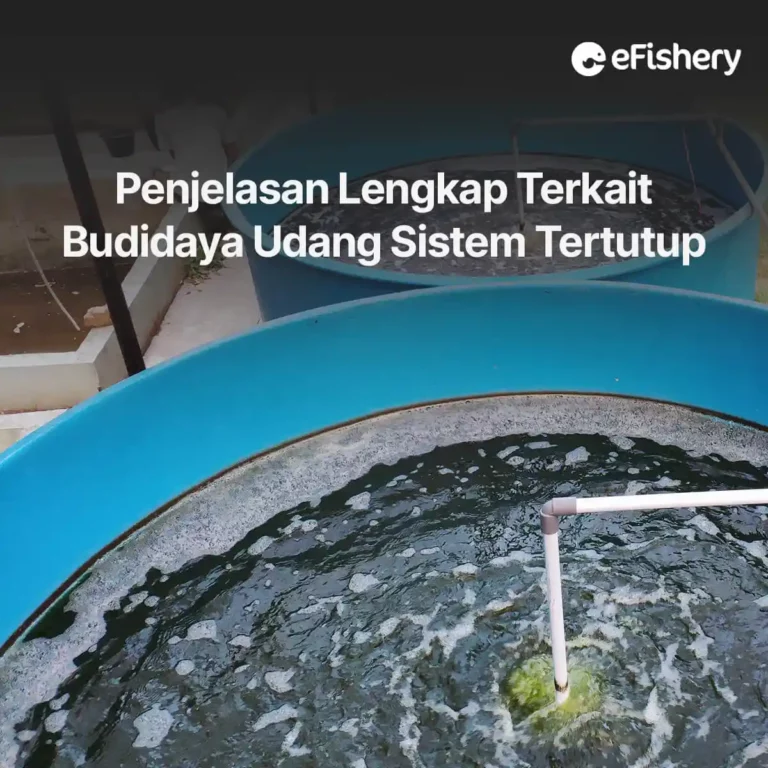Artikel Ini Telah Direview Oleh:

Syavin Pristiwayuning
Penulis Makalah Ilmiah Perikanan
Closed system shrimp farming is shrimp farming where one of the goals is to increase the efficiency of water use during the culture cycle. However, other than that, do you know the other principles or goals of this cultivation system? If not, find out more in this article!
Cultivation System Based on Water Use
Closed system shrimp culture is a type of aquaculture system based on water use. In addition to closed systems, there are also open, semi-closed, and closed recirculating system (CRS) in it. Here are the differences between the 4 cultivation systems:
1. Open System
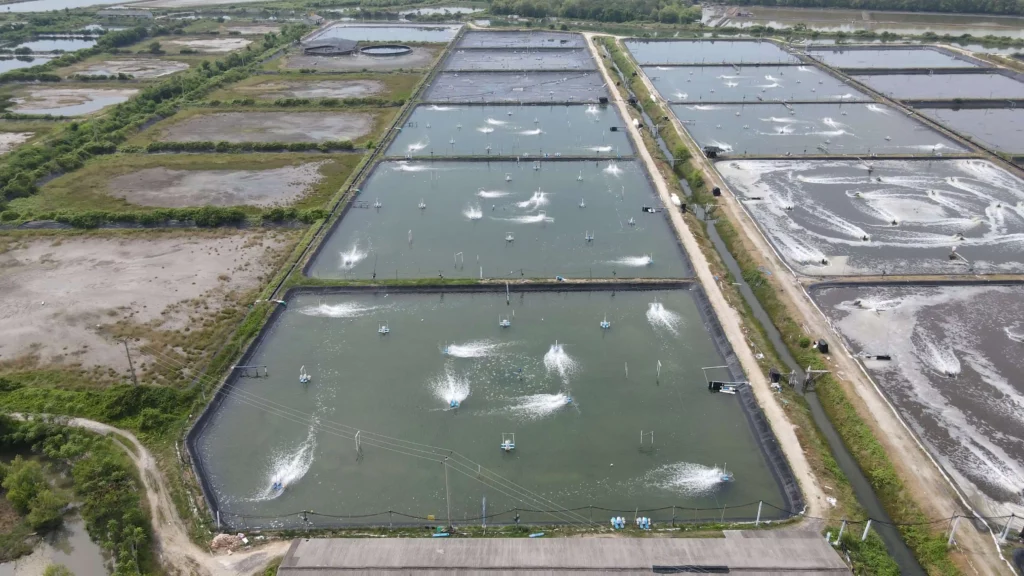
Open system shrimp farming operates by requiring sunlight, nutrients, and gases from the environment around the pond. These inputs are then processed by planktonic organisms such as phytoplankton and zooplankton to produce food, energy sources, and by-products. Therefore, this cultivation is also called the plankton system cultivation which can produce large amounts of plankton for vannamei shrimp feed.
Open system cultivation produces output in the form of waste and by-products which can affect the quality of the environment and the balance of the ecosystem as a whole. These wastes and by-products are then processed and returned to the environment through decomposition processes and nutrient cycles.
Environmental changes such as changes in temperature, nutrient levels, physical conditions and water chemistry can also affect the dynamics of ponds using open systems. In contrast, open systems can also affect the surrounding environment through the production of oxygen and consumption of carbon dioxide. Overall, open system cultivation exhibits complex interactions between organisms and the environment that influence each other and can have an impact on the balance of the ecosystem as a whole.
2. Semi Closed System
Semi-closed cultivation is a mixture of open and closed system cultivation. In this system, water sterilization is only done during water preparation and cultivation in the first or second month. In the following month, cultivation was carried out with an open system. The use of this system aims to anticipate disease attacks at the beginning of cultivation, which is a critical phase, and overcome the decrease in water quality and volume in the mid to late cultivation. In addition to sufficient water throughout the cultivation period, semi-closed systems can reduce disease incidence and reduce production costs.
3. Closed System
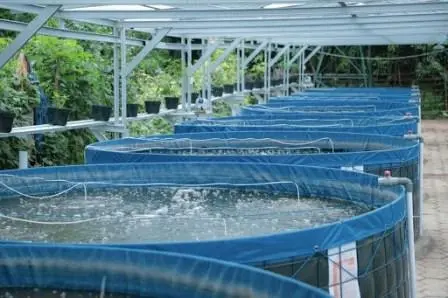
In the aquaculture industry, closed system shrimp farming is also called biofloc shrimp farming. This system applies a method of raising shrimp using closed system technology, in which shrimp pond water is treated biologically by bacteria and microorganisms that live in the system. In this cultivation system, the presence of a central drain or siphon is not required.
In this system, organic waste and leftover feed are processed by bacteria and will then produce nutrients that can be reused by the shrimp. These nutrients are then absorbed by plants or phytoplankton which also live in the biofloc system.
Even though it is very profitable for cultivation, the initial costs that you have to spend to adopt this system are higher than other systems. This is due to the additional cost of building systems and more intensive maintenance in order to maintain the balance of the ecosystem in shrimp ponds.
4.CRS system
Closed recirculating system or CRS arises due to increased disease attacks and high costs for water sterilization during cultivation. On this system, applicability biosecurity to be very strict because water and all pond equipment must be sterilized during the cultivation period.
To sterilize water, you can reprocess wastewater from ponds through settling ponds (sedimentation pond), biofiltration pond (biofiltration pond), and recondition ponds (reconditioning pond) before entering the aquaculture pond (culture pond).
In biofiltration ponds, water treatment is carried out using several types of herbivorous or omnivorous fish such as tilapia, saline, and green mussels. Then, in the recondition pond, water treatment is carried out using an aerator/waterwheel to improve water quality, especially dissolved oxygen. The important thing to note in this system is the comparison between the cultivation pond (pond) and the treatment pond (treatment pond).
Advantages of Closed System Shrimp Cultivation
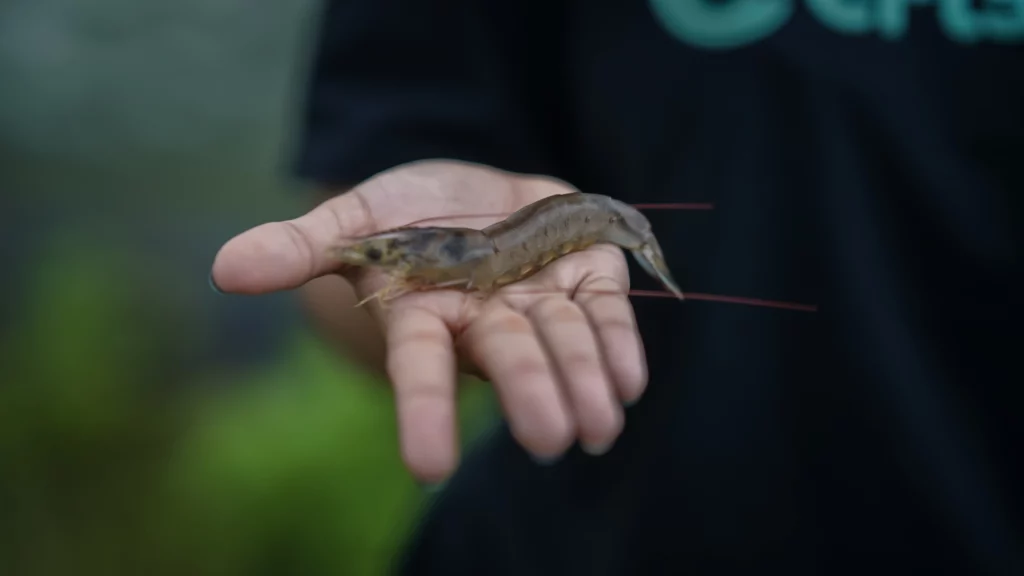
Shrimp culture systems with a closed system have been widely used by shrimp farmers because of the advantages that can reduce costs and use of water. Besides being able to save on water costs during cultivation, here are some of the advantages of closed system cultivation:
- Efficient use of water because water can be used repeatedly.
- Reducing the potential for pathogens during cultivation.
- Reducing effluent disposal (waste from food processing) with levels Biological Oxygen Demands (BOD) is rich in nutrients to the environment around the pond so that it can increase biosecurity in the cultivation system.
- Supports simultaneous waste management and feed protein recycling, potentially offering greater sustainability and environmental compatibility to shrimp farming communities.
- Improving the poor quality of pond water.
- Prevents high contamination of harmful microorganisms from conventional pond water treatment systems.
- Improving the quality of shrimp yields and reducing the opportunities for various diseases to infect shrimp because pond water has previously been filtered and sterilized in reservoir ponds.
- Increase the stocking density of shrimp.
- Reducing the use of shrimp feed due to the production of nutrients that can be reused by shrimp.
Types of Microbial-Based Closed Systems
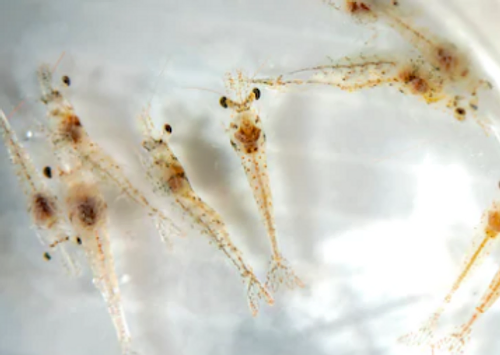
Along with the rapid growth of the Aquaculture industry in the world, research to create even better technology needs to be carried out. One of them is research on the use of microbes in closed system shrimp farming which is currently widely used in the aquaculture industry. In this case, the role of microbes is:
- As a food source, such as microalgae for the shrimp larval phase.
- Maintaining water quality, such as using ammonium as a nitrogen source for microbial metabolism.
- Fighting disease, such as immunostimulants that trigger antibodies or directly interact antagonists with pathogens.
The application of microbes in Aquaculture is carried out into closed microbial-based systems, such as the ZWD system, Biofloc, Periphyton, Biofilm, Defined biofilm, RACE, And Green water technique.Following are the various types and characteristics of each microbial-based closed system:
Types and Characteristics of Microbe-Based Closed System Shrimp Cultivation
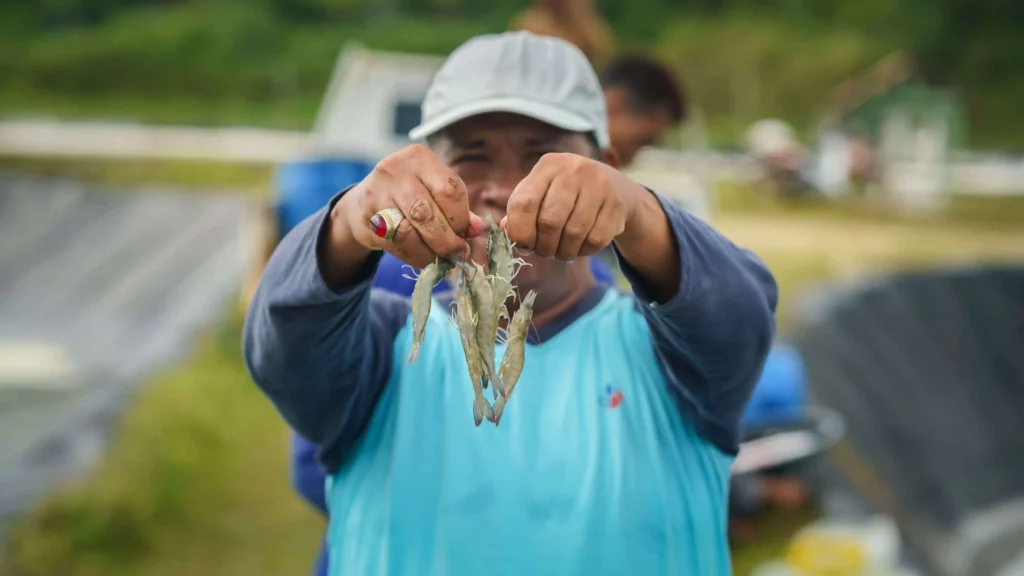
1.ZWD (Zero Water Discharge)
- Low water discharge or none at all
- Regularly adding a group of microbes to the system
- Removes toxic nitrogen compounds with a microbial cycle system
- Maintaining the dominance of the microbial component in the system
- Requires additional compartment for separate microbial cultivation
2. Biofloc
- Low water discharge or none at all
- Adding a carbon source to increase the mix of heterotrophic bacteria
- Emphasizes the ratio of carbon and nitrogen in the system
- Converts nitrogenous waste into suspended solids (microbial biomass) with high concentration which is used as high protein feed for shrimp
3. Biofilms
- Low water discharge
- Removes toxic nitrogen compounds by forming biofilm during cultivation
- No microbial control
- Become a food source for shrimp
4. Defined Biofilms
- Requires additional reactor and additional substrate
- The existence of a group of microbes that are defined in biofilm (mainly nitrifying bacteria)
- Able to remove toxic nitrogen in the system
- Can be applied in the system or in an external unit such as a biofilter
5. RAS (Recirculating Aquaculture System)
- There is no water discharge at all
- Requires a lot of physical and chemical treatment
- The presence of a separate microbial section in the biofilter
- The water system is clear and isolated
- Shrimp have become more hygienic and biologically safe
- Investment costs and operational costs are higher than other systems
6. Green Water Technique
- Low water discharge
- Using autotrophic microalgae as microbial components in the system
- Utilizing chemical fertilizers and organic waste to trigger the growth of phytoplankton
- There is no control in the microbes in the system.
- Provide natural food for shrimp
7. Periphyton
- Low water discharge or none at all
- The presence of periphyton (a living microorganism attached) which acts as a nitrogen disposal system and a food source for shrimp
- Requires bamboo as a medium for periphyton to attach
- Requires manure and chemical fertilizers to trigger the growth of periphyton
- Sometimes, it requires an additional carbon source to maintain the carbon to nitrogen ratio in the system
Get Other Interesting Tips About Shrimp Cultivation at eFarm!
Need Help Regarding Shrimp Cultivation Business?
Fill in your personal data in the following form. Our team will immediately contact you via the number cellphone attached. Make sure the data entered is correct.
Closed system shrimp farming is indeed very interesting because there are many benefits that you can get with this system. However, you need to do closed system cultivation in the right way to maximize profits. If you want to know the right way to cultivate shrimp with this system, you can consult with a shrimp cultivation expert first. eFishery through features Cultivation Consultation in app eFarm.
Besides being able to consult directly about closed system shrimp farming, in features Cultivation Consultation You can find other interesting tips about shrimp farming.
Fill out the form above to consult at Cultivation Consultation!

Syavin Pristiwayuning - Penulis Makalah Ilmiah Perikanan
Berpengalaman sebagai asisten koordinator pelatihan teknisi pada tahun 2020 dan saat ini aktif sebagai Technical Support Online di eFishery
- https://pndice.com/sistem-budidaya-udang-vaname/
- http://repository.lppm.unila.ac.id/9028/1/Teknologi%20Produksi%20Udang%20%28Supono%29.pdf
- https://www.researchgate.net/publication/347180489_Penerapan_Teknologi_Closed_system_Pada_Pembudidaya_Udang_Vaname_Litopenaeus_vannamei_Kelompok_Laut_Mina_Budidaya_Bireuen_Aceh/link/5fe06c09299bf140882fa0cc/download
- https://www.scribd.com/doc/13334430/Sistem-Resirkulasi-Tertutup-Pd-Tambak-Udang-Intensif-oleh-Indra-Gumay-Yudha#
